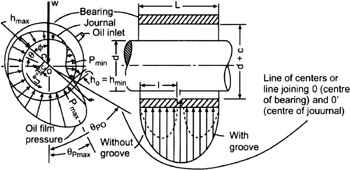Originally Posted By: ZeeOSix
Originally Posted By: Shannow
I told you, squirter oil flow is based on pressure applied to it, not RPM...asking for an answer to a nonsensical question ?
Well, actually more engine RPM means more volume being forced through the squirter (or any other flow element), and the resulting pressure is seen. So yes, in the case of an engine with a PD oil pump the flow through it (and everything else) IS a product of RPM which produced the oil pump volume.
Originally Posted By: Shannow
Again, asking a nonsensical question (% change in squirter flow versus RPM) in and of itself clearly identifies that you really haven't had the opportunity to grasp fluid dynamics.
I don't think you're really grasping my question. I'll try again. You say that as engine RPM increases the tight crank, rod and cam bearings will flow less oil (non-linear flow curve with increased oil volume supplied) and the result is that the oil squirters will then flow more oil as a result (ie, the flow slit percentage to the squirters will increase). Isn't that what you are saying?
So let's say the oil squirters at idle flow 10% of the total flow volume from the pump. As you increase engine RPM the flow volume (and resulting oil pressure) will increase. At 2000 RPM are the oil squirters now drawing 11%, 15%, 20% of the total volume? At 5000 RPM they would be drawing an even higher percentage ... by how much? Does it change enough to even be measurable? I doubt it changes enough to even matter as engines can run for hours on end at near redline in race conditions and never fail.
I just want to know what oil will make my XSR shift less notchy while down shifting.

Thousands of miles... shifting improved greatly in the first 1k on my FZ-07, but its still not as silky as my old Kawasaki 454. Run Yamalube, Rotetlla TTT, M1 T&S and M1 15W-50.
Originally Posted By: Shannow
I told you, squirter oil flow is based on pressure applied to it, not RPM...asking for an answer to a nonsensical question ?
Well, actually more engine RPM means more volume being forced through the squirter (or any other flow element), and the resulting pressure is seen. So yes, in the case of an engine with a PD oil pump the flow through it (and everything else) IS a product of RPM which produced the oil pump volume.
Originally Posted By: Shannow
Again, asking a nonsensical question (% change in squirter flow versus RPM) in and of itself clearly identifies that you really haven't had the opportunity to grasp fluid dynamics.
I don't think you're really grasping my question. I'll try again. You say that as engine RPM increases the tight crank, rod and cam bearings will flow less oil (non-linear flow curve with increased oil volume supplied) and the result is that the oil squirters will then flow more oil as a result (ie, the flow slit percentage to the squirters will increase). Isn't that what you are saying?
So let's say the oil squirters at idle flow 10% of the total flow volume from the pump. As you increase engine RPM the flow volume (and resulting oil pressure) will increase. At 2000 RPM are the oil squirters now drawing 11%, 15%, 20% of the total volume? At 5000 RPM they would be drawing an even higher percentage ... by how much? Does it change enough to even be measurable? I doubt it changes enough to even matter as engines can run for hours on end at near redline in race conditions and never fail.
I just want to know what oil will make my XSR shift less notchy while down shifting.

Thousands of miles... shifting improved greatly in the first 1k on my FZ-07, but its still not as silky as my old Kawasaki 454. Run Yamalube, Rotetlla TTT, M1 T&S and M1 15W-50.



